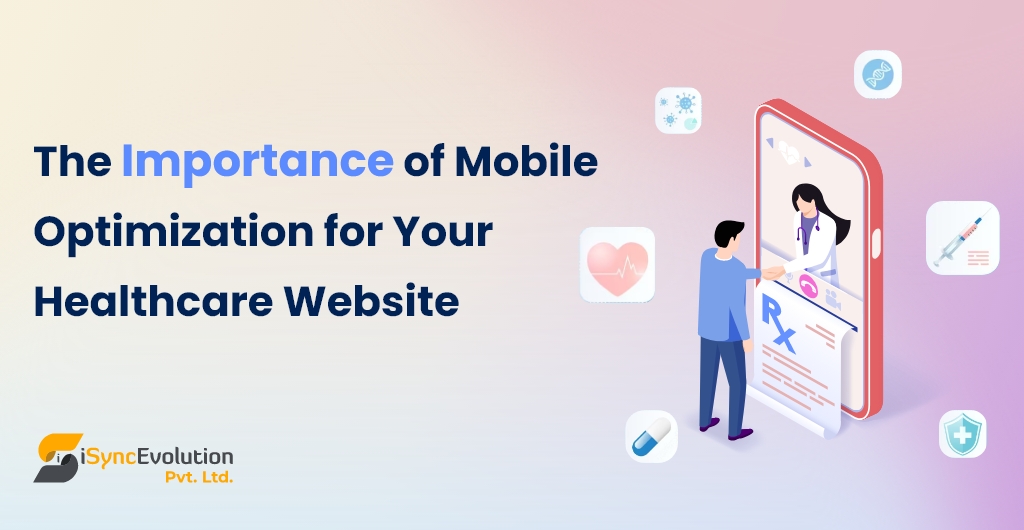In the 21st century, having a website is critical for many types of organisations, including healthcare services. However, merely having a website is insufficient. With the increased use of mobile devices, it is critical that healthcare websites be optimised for mobile devices in order to give consumers with the best possible experience. This is where mobile optimization and responsive design come into play. In this blog, we will discuss the importance of mobile optimization for your healthcare website and provide tips for creating a responsive design.
Importance of Mobile Optimization for Healthcare Websites
With the rise of mobile devices, it is no surprise that mobile traffic has surpassed desktop traffic. According to Statista, in 2021, mobile devices accounted for over 50% of all website traffic worldwide. This trend is even more prevalent in the healthcare industry, where users are often on-the-go and looking for quick access to healthcare information.
Having a mobile-optimized healthcare website has several benefits. First, it improves the user experience by providing users with a seamless and easy-to-navigate website that fits their mobile device’s screen size. This can lead to higher engagement and more time spent on your website. In addition, mobile optimization can also improve your website’s search engine optimization (SEO) by increasing its visibility in search engine results pages (SERPs).
- Tips for Responsive Design: Now that we’ve discussed the importance of mobile optimization, let’s dive into some tips for creating a responsive design.
- Prioritize User Experience: When designing your healthcare website, put yourself in your users’ shoes. Consider how they will interact with your website on their mobile devices and prioritize a smooth and intuitive user experience. This includes easy-to-use navigation, clear call-to-actions, and well-organized content.
- Use a Responsive Framework: A responsive framework, such as Bootstrap or Foundation, can simplify the process of creating a mobile-optimized website. These frameworks provide pre-built code and components that are designed to work well on mobile devices.
- Optimize Images and Media: Large images and media files can slow down your website’s loading time, which can be especially frustrating for mobile users. To avoid this, optimize images and media by compressing files and reducing file sizes.
- Implement Mobile-First Design: When designing your healthcare website, start with a mobile-first approach. This means designing your website for mobile devices first and then scaling up to larger screen sizes. This approach ensures that your website is optimized for the most commonly used devices.
- Test on Multiple Devices: Before launching your healthcare website, be sure to test it on multiple devices to ensure it is responsive and looks great on all screen sizes. This includes smartphones, tablets, and desktops.
- Use Mobile-Friendly Forms: If your healthcare website includes forms for users to fill out, make sure they are mobile-friendly. This means keeping the forms short and simple, using mobile-friendly input fields, and testing the forms on multiple devices to ensure they work correctly.
- Consider Mobile-Specific Content: When designing your healthcare website, consider including mobile-specific content that is tailored to users on-the-go. This could include quick access to urgent care locations, appointment scheduling, or telemedicine options.
- Prioritize Page Speed: Page speed is crucial for mobile users who may be on slower internet connections or have limited data plans. To ensure your website loads quickly, minimize the number of HTTP requests, enable compression, and use caching.
- Optimize for Voice Search: With the rise of voice assistants such as Siri and Alexa, optimizing your healthcare website for voice search can be beneficial. This includes incorporating long-tail keywords, using natural language in your content, and ensuring your website is easily navigable by voice commands.
By implementing these additional tips, you can further optimize your healthcare website for mobile devices and improve the overall user experience.
In conclusion, mobile optimization and responsive design are crucial for healthcare websites to ensure they provide users with a seamless and enjoyable experience. By prioritizing user experience, using a responsive framework, optimizing images and media, implementing mobile-first design, testing on multiple devices, using mobile-friendly forms, considering mobile-specific content, prioritizing page speed, and optimizing for voice search, you can create a mobile-optimized healthcare website that engages and informs your audience. At iSyncEvolution, we offer app optimization and app development services to help businesses of all kinds create mobile-optimized websites. Contact us today to learn more about our services and how we can help your healthcare website reach its full potential.
